An article by Author Chuck Veit
The torpedo launched perfectly, and ran “hot, straight, and normal” towards its target, its solid
fuel pushing it along at over 130 mph. It took but a second and a half to cover the hundred
yards—well within the six hundred yard range promised by its inventor. When it struck, it ripped
a hole in the side of the ship, sending splinters of the twenty-inch-thick oak hull whirling through
her hold. In minutes, the luckless vessel was under the waves, the sudden stream of water far too
much for any number of pumps or carpenter bent on dropping over the side to fother the jagged
gap with canvas. The trial was an absolute success in every respect. Now every ship in the fleet
would be equipped with the weapon, which would overnight make the U.S. Navy superior to any
other naval force on the planet. The year was 1863, and Edward B. Hunt’s rocket torpedo had
passed its final tests.
While fanciful in a general sense—no eyewitness account of such an event survives—the
foregoing is accurate in its specifics. Beginning in March 1862, the Federal Navy did embark
upon an ultra-secret program to develop a rocket torpedo, allowing Captain E. B. Hunt
of the U.S. Engineers carte blanche to utilize the resources of the Brooklyn Navy Yard for a full
eighteen months. The weapon he developed was not armed, but relied upon kinetic energy to
puncture the hull of its target. Given the dimensions and components of the final torpedo, the
rocket weighed 300 pounds—which required a minimum speed of 130 mph to pierce 20-inches
of oak (the near-maximum thickness of hull at the time). Any steam or sailing man-o’-war would
be vulnerable, as would every ironclad warship, for, below their heavy armor belts, they, too, had
but oaken hulls. The volume and rate of conflagration of the “rocket composition” fuel that drove
the missile indicates a range of over 600 yards. Finally, the weapon was successful—so much so
that, on 8 July 1863, it went into production. The key gating event of its final trial was a scene
similar to the above paragraph.
Hunt called his ironclad killer “Sea Miner,” because the four grooves that twisted down its
length made it spin and bore through the water like a miner’s auger. It was, as his wife Helen
said, “A weapon of the utmost simplicity.” Yes, simple—after the rocket scientist had figured it
out and after months spent demonstrating to the Navy that no other design could work.
The episode that spurred Hunt’s thinking was probably “Pope’s Run.” 1 Officially known as the
Battle of Southwest Pass, the 12 October 1861 engagement saw the first American ironclad, CSS
Manassas, ram USS Richmond and send Captain John Pope’s blockading squadron scampering
out to sea. This was a bloodless affair, but Richmond sustained damage sufficient to warrant a
visit to the Navy base at Key West. Captain Hunt was stationed here, in charge of completing
Fort Taylor and, listening to accounts of the battle, realized a solution that did not involve bigger
and better guns with armor-piercing ammunition.
At core, Manassas was nothing more than a kinetic energy weapon. All 387 tons of iron, coal,
engines, and crew were nothing but a vehicle for delivering its weapon—an iron ram—on target.
While identical in theory to the simple solid shot cannonball, Manassas was in an entirely
different league when it came to impact. Moving with the current at ten knots, she packed a
whopping 4.6M Joules of energy (Note 2). This made the rebel warship effective, but wildly inefficient,
for even a lowly 12 pounder shot could penetrate twenty inches of oak at 650 yards range, while
packing but ¼M Joules. The ram’s extra power was unintentional—a simple by-product of the ship’s need for armor that would allow it to pass through an enemy’s broadsides. Its iron prow
did not require all that energy. Could such a weapon could be divorced from the ship?
Simply thinking in such terms put Hunt years ahead of his time. At what point in the six month
interval between Richmond’s visit and his letter to Secretary of the Navy Gideon Welles he came
up with the design for Sea Miner is not recorded; in fact, Hunt committed very little to paper.
Even his introduction to Welles was oblique and gave no hint as to what he had devised. The
signatories, however, were more than enough to capture and hold the Secretary’s attention. The
list was a “Who’s Who” of the best minds in the Navy and the Army, and included
Dr. [Andrew A.] Henderson, U.S.N.
Prof. W. P. Trowbridge, U.S. Eng. Agency, N.Y.
Commander D. D. Porter, U.S.N.
Captain C. Wilkes, U.S.N.
Captain [John D.] Kurtz, Corps of Engineers
General [Daniel P.] Woodbury, U.S. Engineers & U.S.V.
Lieutenant [Walter] McFarland, Corps of Engineers
General [George B.] McClellan
Asst. Sec. of Navy [Gustavus V.] Fox.
Captain [Henry Augustus] Wise, U.S.N.
Captain Hunt, who had been maneuvering for a posting to the front since the start of the war,
was whisked away from General Halleck’s staff in Virginia after only two weeks, and seconded
to the Navy by mid-April 1862. One month later, on 17 May, the public got its first hint that
something unusual was taking place at the Brooklyn Navy Yard.
Amazingly, the American public was still allowed to visit the Yard, which seems to have put in
place few additional security measures to control either those crowds or the drastically-increased
number of civilian “mechanics” hired to work on Lincoln’s gunboats. In mid-May, it was
reported to a local newspaper that a large and strange wooden box had been built on the wharf
near the dry dock. The crate was over twenty-four feet long, twelve feet wide, and stood eighteen
feet high, with a narrow “porch or portico” on one end. Its lower deck was a full twelve inches
thick, and the sides of the “hull” eight or nine. No one knew its purpose, but this did not stop
people from positing all manner of plans: it was a ram or a floating battery that would be armor-
plated and sent into battle or sunk in the James to fire an air cannon up under rebel ships. The
fact that the thing apparently had neither weapon nor engine did little to slow down the rumor
mill. Perhaps as an admission of ignorance, someone chalked on its side the words, “What is it.” (Note 3)
The name stuck, and would be used by both the public and the government.
Interest in the “What is it” waxed and waned over the summer and fall of 1862; eventually, it
became but a background feature of the busy ship yard. Nothing further seemed ever to be done
with it, and it slowly dropped out of the papers. Behind the scenes, however, there was intense
activity relating to the strange device. Captain Hunt planned to use a simple and readily-available
four-inch rocket as the engine to power a larger, foot-thick, 77-inch torpedo. Within its oak-
encased body, the missile would carry a 70-pound lead weight near its nose; this would be the
ram. Hollowing and shaping the oak jacket was simple enough, but Hunt’s design called for four
grooves to be cut in a helical pattern down the length of the projectile; these would impart a
rotation that, like a rifled bullet, would improve range and accuracy. Unfortunately, turning the
grooves was time-consuming and thus expensive, and, given that the weapon was as yet
unproven, the Navy insisted on alternative designs.
Edward Hunt faced a challenging situation in that summer of 1862. His insistence on
maintaining secrecy meant that no one else at the Yard had a complete understanding of what he
was doing—yet his activities were sanctioned by the Secretary of the Navy, and his instructions
followed precisely. Even Commander Almy, in charge at Brooklyn, may have been told simply
to provide whatever the Army officer requested with no questions asked. By the fall, frictions
had developed, quite probably rooted in some interservice rivalry: the Yard was tasked with
building warships, not with catering to an Army engineer who would not even divulge what he
had them creating. One of the very few letters written by Hunt, dated 9 October, asked Assistant
Secretary Gus Fox to mediate some undescribed conflict. This was evidently not the first issue,
as the engineer opined, “I have been sorely tried by the delays in executing the Sea Miner.”
Given that he had originally expected to be absent the Army for a mere fortnight, this is an
understatement. Hunt cites the source of the extended development squarely on the time lost in
“trying to economize on the rifling”—a needless effort that has now “end[ed] in naught.” (Note 4)
On 10 December, the “What is it” again became the talk of the town, when the papers reported
that the public were thrown into excitement by the appearance in the yard of a weapon as singular as
the nondescript itself. It is a gun of the strangest aspect imaginable, and seems capable
of discharging sixty pounds of shot. It is made of brass, or composition, and its breech
and muzzle rest on a frame or pedestal of the same material as the gun. There are none
of the ordinary appliances for firing a cannon attached to it, and this singular arm is to
be the battery of the “What is it,” which is to be launched in a few days. (Note 5)
A reporter for the New York World added that, “the gun will be within, and although in firing
will protrude through the port-hole, a porch or portico covers its muzzle.” (Note 6) No one realized they
were seeing the U.S. Navy’s first torpedo tube. The fact that this had been constructed strongly
suggests that the government had been convinced that Hunt’s original design was the best
one—but that fact still needed to be demonstrated. Therefore, in early January, the “What is it”
was towed into the stream. As there are no reports of its returning for several weeks, its
destination was probably Buttermilk Channel near Fort Columbus on Governor’s Island. This
site would allow for berthing of the sailors detailed from North Carolina to serve as crew and
also provide a secure military dock for tying up the “What is it” and its tow ship at night.
Conditions in the channel were brutal over the next several weeks, with heavy fogs and
temperatures that fluctuated between unseasonably mild and freezing cold. The tests conducted
by Hunt are undocumented, but we can surmise that they encompassed each and every
alternative design he had been forced by the Navy to develop. One source claims that thirteen
trials were made in all. (Note 7) Small details slipped back to the newspapers—supposed “facts” that did
not bring cheering news. One rocket travelled an impressive two hundred feet underwater, but
then broke the surface to fly another 150 through the air before plunging down to disappear
beneath the waves. Others sank and then rose so rapidly that they could only cover an
appreciable distance by aiming them well downward at launch.
These trial rockets were all scale models measuring two or three feet in length. The only
mention we have of their design claims at least one used lateral vents of gas to rotate the missile.
The “launcher” at this time was nothing but a large Dahlgren gun sitting atop two logs that rested
on a bed of kentledge (scrap iron). As there was no recoil, this served merely as a tube to direct
the torpedo down range. The portico on the front of the “What is it” served as a loading chamber
that could be flooded and then pumped out to insert the next rocket. The mere fact that Hunt was firing rockets already-immersed in water was a giant leap in thinking. Other period inventors
fired their torpedoes dry, (i.e., above the surface via a tube that angled them into the water); this
meant that much energy was lost when the projectile struck the surface. The practice also
developed “eccentricities” in guidance.
On 14 January, the New York Evening Post announced, “The unnamed marine battery, of
which great things were expected, does not seem to have as yet answered the purpose of its
projectors,” that the experiments with it “are reported to have been rather unsatisfactory.” (Note 8) Two
weeks later, the tabloids claimed that the “nondescript naval battery is resting quietly in the mud
on the bottom of Gravesend Bay and is reported to be breaking up.” (Note 9) However, after six weeks of
weather-related delays, the ungainly “What is it” was towed back to the Brooklyn Navy Yard on
14 February, “having achieved an astonishing success.” (Note 10)
As a scientist, Edward Hunt considered the demonstration of various models as “intended
merely to test the correctness of the general principles involved.” There were two results from
the winter trials: Hunt was vindicated in his original design for a kinetic torpedo sheathed in a
grooved oak jacket—and he was promoted to major and allowed to continue work on the project.
Unfortunately, almost all later mentions of Edward Hunt are based on the failures of some of
these scale torpedoes; like the story of the blind men and the elephant, civilian and naval
historians cite these and dismiss the project out of hand. The evidence, however, shows this not
to have been the case.
Major Hunt spent May correcting some “mechanical difficulties.” Simultaneously, the portico
or loading chamber of the “What is It” was struck off, the Dahlgren gun hoisted out, and the
brass launcher installed. Full-size torpedoes would now be loaded through the breech and the
tube itself flooded, so there was no more need for the forward compartment. The muzzle of the
launcher was mounted in a large ball and socket joint, which would allow some latitude in
training the torpedo.
On 19 June, Hunt again “took the submarine battery ‘What Is It’ from the Brooklyn Navy
Yard, to try further experiments in the harbor. Some officers of the Army and Navy went with
him.” This was meant to be the final test of the weapon, and the “evolutions performed …
demonstrated the entire success of the battery.” (Note 11) While period newspapers had at best a strained
relationship with accuracy, the veracity of this particular claim is proven by an 8 July 1863 Navy
Ordnance Bureau order to put Hunt’s projectile into production. The word “torpedo” still then
being used to describe what we would call a mine, the Bureau referred to the projectile as a
“Marine War Rocket” or a “What Is It Shell.” (Note 12) Four days after the Union victories at Gettysburg
and Vicksburg, the U.S. Navy had an automobile torpedo—and it knew exactly who would be on
the receiving end of the new weapon.
While the rebel navy would lay claim to some successes through the remainder of the war,
there was little question by 1863 that they would eventually be swamped by the Federal fleet.
The resources of the North were simply too great for any amount of afloat Southern valor to stem
the rising tide. The number of Confederate ironclads was dwindling, and with them the need for
a weapon such as Sea Miner. But, then, neither Hunt nor Welles had ever considered these to be
the real target of such an advanced weapon.
Modern Americans—even Civil War buffs—are not cognizant of the sincerity with which their
ancestors anticipated war with England and/or France. As early as 1862, Northerners did not
suspect, but knew, foreign war was coming; such an event was considered a certainty. That these
were the foes for which Sea Miner had been developed is shown by a newspaper article of 15, February 1863, written the day after the “What is It” returned to the Yard and Hunt reported the
success of the rocket. In the short piece, the paper claimed that a previous report of the battery’s
failure had been fabricated to “keep curious foreigners from trying to witness the experiments.” (Note 13)
This was the global situation perceived by Gideon Welles when he responded to Edward
Hunt’s initial letter. If the acclaimed and respected scientist could deliver the weapon he
promised, it might prove critical in any open-ocean engagement against enemy warships or
transports—which had to be stopped before they could land the troops sent by London and Paris.
Now, in July 1863, the Navy had the weapon it needed.
That weapon was, in a word, perfect. Based upon the color coding in the period schematic—for
which the key unfortunately does not survive—and knowing that the outer jacket was oak and
the inner fuel tube brass, we can surmise the nature of its other components. These are detailed in
Fig. 9. All told, the various parts weighed 300 pounds. At 77” in length and 12” diameter, the
water displaced by the volume of the torpedo is but several ounces less than 300 pounds. The
projectile has near-perfect displacement; this means that it will neither rise nor fall in the short
water column into which it is launched.
Edward Hunt also achieved near-perfect balance. This is proven by data derived from
experiments with a “balancing board” Identifying the various metals and woods that made up the
torpedo allowed for calculation of the weight of every one-inch “slice” of the projectile. Along
the length of a 77 inch board, appropriate weights were hung from the sides at one-inch intervals;
each item was weighed to two tenths accuracy using an aircraft luggage scale, and the weight of
the board and a supporting plank were also calculated. The ideal of any projectile is to achieve a
coincidence of the “center of figure” (CoF) and the “center of gravity” (CoG)—meaning, does
the missile balance in the middle? The geometric center of the Sea Miner device is at 38.5
inches. When fully fueled, the CoG is at 39.0 inches. Hunt’s configuration of rocket composition
was such that, when 25% consumed, the CoG changes to 38.5”; at half-consumption, it shifts to
38.75 inches; with 75% burned, the CoG moves to 38.5”; and when empty (but still moving), it
returns to the 39.0 inch mark. The torpedo is incredibly well-balanced, even as its fuel
conflagrates. The composition weighed 14.7 pounds and its reduction to zero might be thought to
cause deviation in elevation, but, based on period data, that amount of fuel would last no more
than 10.5 seconds—a very small amount of time for any significant deviation to occur.
Hunt also made the Sea Miner rotate. Other designers attempted this same effect, but used
various angled gas vents to do so; these were not successful. Rather than having jets of gas push
laterally against the water, Hunt directed all of the torpedo’s exhaust out one large exit nozzle in
the rear (which incorporated several smaller angled vents, but also at the rear). Rotation was
achieved by carving four deep spiral grooves down the length of the wooden body; this motion is
what gave the rocket its name.
This story of the U.S. Navy’s torpedo development program ought to end here, with the name
of Edward B. Hunt enshrined in naval lore, the production of hundreds of the missiles, their
installation on board every ship in the fleet, and the mere threat of their use making the nation
supreme upon the seas. But it does not conclude in any such wise. The key to understanding why
Hunt is all but forgotten and the Sea Miner torpedo not only never deployed but considered a
failure lies in three small words in the newspaper report of its success on 19 June 1863. Recall
that, for the final demonstration, “officers of the Army and Navy went with him.” Why was the
Army involved in the development of a Navy torpedo?
Because Major Hunt had been seconded to the Navy in April 1862 and reported directly to
Secretary Welles, it is logical to assume that he was engaged in creating a purely naval weapon.
This seems not to have been the case; rather, evidence indicates that Sea Miner had a dual
purpose. Not only was the torpedo to be ship-launched horizontally at a pre-set depth, it was also
meant to be fired aerially from shore installations to plunge downward into enemy vessels in the
channels that led up American rivers and into harbors. Such narrow waters were inappropriate
for a high-speed naval torpedo for, missing its target, it would continue to the opposite
shore—perhaps into a town or city or strike a friendly fortification. Plunging fire was the only
safe alternative for what amounted to a 300-pound solid shot travelling at 130 or more miles per
hour. The launching sites on the banks would be manned and operated by the U.S. Army, not the
Navy.
E. B. Hunt had proven his theory and built a practical device. Yet, following the production
order of 8 July, he continued to work on Sea Miner through the summer. With the Navy already
building rocket torpedoes, what more needed doing? Knowing of the Army’s planned use for the
weapon, the hint that, “the remaining experiments being mainly adjusting ones,” strongly
suggests he was laboring away at what artillerists would recognize as a range table. (Note 14) These
existed for all land and shipboard guns and could be quickly referenced to obtain a firing solution
without the need to calculate the variables of distance, elevation, charge, and weight of the
round. Rockets, which had been used in warfare since about 1800, were never intended to be
accurate; in fact, the more unpredictable their path, the better they served their purpose of
breaking up troop formations. They were intended to be disruptive rather than necessarily
destructive. Hunt had now to conduct the extensive trials needed to account for all these same
variables, as well as one additional factor—how the torpedo was balanced.
Examination of the period cutaway diagram of the missile turns up an interesting feature: a
lead disk ringed around the central fuel cylinder of compressed black powder. In the drawing,
this disk is centered on the length of this tube. Closer inspection shows that it is held in place by
set screws—which means it is meant to be repositioned. Construction of a facsimile of the
torpedo demonstrated that the weapon balances perfectly level only when this weight is placed as
far astern as possible. Moving it forward by even a single inch tips the nose down slightly—an
attitude that grows increasingly pronounced the closer to the front the disk is slid. As such, it
seems evident that the purpose of the moveable weight is to change the center of gravity of the
projectile, to make it more and more nose-heavy. There is no application for such a feature in use
of the shipboard torpedo, but the ability to affect the point at which the nose tips down is all but
requisite for any air-launched deployment. With an enemy ship approaching along a narrow
channel, a shoreside gunner would need but to consult his range table to realize the proper
positioning of the slider for launch at a given angle and elevation. A long shot could be made by
leaving the weight at the back of the missile; a much shorter shot and more rapid descent
achieved by moving it forward.
For the remainder of July and through August and September, Major Hunt labored away. His
time at the Navy Yard, however, was now split with three other assignments. Given the success
of the Navy version of the Sea Miner torpedo, the Army had great faith that their officer could
also deliver the aerial version. Nonetheless, prudence dictated they continue other preparations
for the expected war with England. These included the completion of a number of unfinished
forts and the construction of new fortifications along the northeastern seaboard. Along with
every other engineer not actually at the front, Hunt was tasked with a strenuous and exhausting
list of responsibilities. While still responsible for completion of Sea Miner, his duties now encompassed projects at New Haven, New London, and on Dutch Island in Narragansett Bay.
How he divided his time is unknown; that he was constantly on the move and focused on too
many priorities is a given.
On 30 September 1863—a beautiful autumn day that saw the officers of the recently-arrived
Russian squadron touring the fortifications around New York harbor—Major Hunt was aboard
the “What is It” for yet another round of launches. Preoccupied, exhausted, certainly unfocused,
he made a tragic mistake. The procedure for launching the Sea Miner torpedo underwater
required that the missile be loaded dry; the front hatch opened to flood the tube; the torpedo
fired; the front hatch closed and the rear hatch opened to drain and allow reloading. On this day,
however, the projectile was being launched dry, its tube angled skyward at a new angle; as such,
the front hatch could be left open. But it was closed. Whether atop the “What is It” or on the
support ship, the Gomez fuse—a rubber tube filled with powdered fulminate of mercury that
could burn a mile of its length in four seconds—allowed no time for redress.
Within the brass launcher, the gasses that ought to have been propelling the Sea Miner rocket
through the air built up until the pressure burst the tube. Hunt immediately realized his mistake
and climbed down the ladder into the hold to open the hatch—just as the launcher broke apart.
He managed to reach the top of the ladder and gesture for help before being overcome and
falling back down. Two men rushed to help the engineer, but each in turn passed out. One
managed to tie a rope around Hunt’s body and, with this, others tried to raise him up from the
fumes. The knot in the line slipped, and Hunt again fell onto the lower deck of the “What is It.”
During one or both of his falls, Hunt struck his head against the launcher, some fitting or the
rough kentledge. Taken to the Marine Hospital at the Brooklyn Navy Yard, naval surgeons
diagnosed him as suffering both concussion and compression of the brain. Even today, this last is
difficult to treat; in fact, the best procedure remains the prehistoric practice of trepanning.
Everything was tried; nothing availed, and Edward Hunt died in a coma two days later on 2
October. He was buried at the military academy at West Point.
Inexplicably, the entire Sea Miner weapons program was dropped—even the proven maritime
torpedo then being turned out by the Navy. The explanation for the termination of the air-
launched Army missile was that no capable person could be found to complete the trials; several
of Hunt’s peers—fellow engineers taxed with the completion of multiple fortifications around
New York City—believed they had sufficient familiarity with Hunt’s general idea, but they
could not be spared their pressing duties. Edward Hunt had been unique: a physically robust,
detail-oriented workaholic, seemingly capable of a nigh-impossible workload. He was, in a word,
irreplaceable.
There is no explanation for why the Navy stopped production of the torpedo. It had the weapon
it wanted and was building them; what the Army chose to do was beside the point. Navy gunners
(“torpedomen?” “rocketeers?”) need not be bothered by factors of elevation, balance, weight of
the “round” or charge; they could literally “point and shoot” once a target was in range. (Note 15) Even
depth was not a concern, as the Sea Miner launcher was to be fixed an appropriate number of
feet under the surface so as to strike its target’s wooden hull below the armor belt. Despite this,
production was halted and, over a year later, on 7 December 1864, all of the Sea Miner rocket
torpedoes were “burnt out and broken up” at the Washington Navy Yard. (Note 16) The launcher “was cut
up for the crucible.” (Note 17) Even the once-mysterious “What is It” was not spared, but was, oddly,
sliced in half horizontally, its lower section left to sit on the wharf at the Brooklyn Navy Yard for
a number of years.
Major Hunt’s mania for secrecy proved the undoing of the project—at least as far as history is
concerned. His civilian aide, John van Doren (a long-time mechanic and draughtsman at the
Yard), recalled in 1874 that, upon the conclusion of every stage of development, “all plans were
destroyed as soon as they had served their purpose.” (Note 18) There was no paper trail and all physical
evidence of the project was demolished. All that remained were hints that the U.S. Navy had
undertaken an ultra-secret weapons project in the middle of the Rebellion. The scant testimony
that forms the basis of this story is the result of a visit to the Brooklyn Yard by Lt. Francis
Barber in 1874, where he interviewed several persons who had been present and worked with
Hunt. Long an advocate of rocket torpedoes, Barber had evidently gleaned the slight and oblique
mentions of the program that leaked out or read the confused assumptions penned by local
journalists in 1862-3. No one was able to provide any concrete testimony beyond rough sketches
of the “What is It” and the launcher.
The U.S. Navy—which, thanks to Hunt’s passion for secrecy was mostly unaware that it ever
even had a program to develop such a weapon—pursued the motorized automobile torpedo.
These were far more intricate than Edward Hunt’s kinetic projectile and travelled much more
slowly, but made up for their relative sloth by delivering an explosive charge. Imagine the
consequences of a torpedo that married Sea Miner’s speed with an explosive warhead; naval
warfare might have been radically different as early as the 1870s. As it is, Major Edward Hunt is
certainly deserving of much greater familiarity among those interested in naval history and
technology. Despite the fact that the weapon never saw service, the fact that it could be
conceived, designed, and built in the mid-1860s changes our entire perception of the War of the
Rebellion; it simply does not seem to belong, to be more appropriate to 1942 than 1862. Sadly,
Hunt is all but forgotten, his brilliant achievement dismissed in a few sparse lines as a failure, he
himself erroneously reported as dying in “an explosion”—which statement further confuses the
nature of Sea Miner. Modern supercavitating torpedo notwithstanding (these use a different
principle), and despite repeated attempts during both world wars, Edward Hunt’s rocket torpedo
has never been duplicated.
ABOUT THE AUTHOR
Chuck Veit is author of a growing number of award-winning books of maritime and naval
history, and has published articles in Naval History magazine, American Historical Print
Collector Society’s Newsletter, Historical Diving Times, Civil War Navy, and the Company of
Military Historians’ Journal. Details at www.chuckveitbooks.com.
CAPTIONS
- FIG 1: Captain (later Major) Edward Bissell Hunt. Photo taken between July 1859 and 3 March 1863. Source: Helen
Hunt Jackson Papers, Part 1, Ms 0020, Box 12, Folder 1, Colorado College Special Collections. - FIG 2: Period schematic of the Sea Miner torpedo. Source: West, Lt C. H. to Commander. R. W. Meade, 28
September 1874. Naval Torpedo Station Records, Box 363, Submarine Boats, Guns, Projectiles & Rockets, pp. 27- Naval Historical Collection, U.S. Naval War College. Newport, RI. - FIG 3: 1874 sketch of the exterior and interior of the “What is It,” showing Dahlgren gun and watertight “portico.” Source: West, Lt C. H. to Commander. R. W. Meade, 28 September 1874. Naval Torpedo Station Records, Box 363, Submarine Boats, Guns, Projectiles & Rockets, pp. 27-34. Naval Historical Collection, U.S. Naval War College. Newport, RI.
- FIG 4: Modern reconstruction of the exterior of the “What is It.” Source: Author.
- FIG 5: Modern reconstruction of the interior. Source: Author.
- FIG 6: 1874 sketch of the final launcher. Source:
- FIG 7: Modern reconstruction of the final launcher. Source: Author.
- FIG 8: Modern view of the interior of the “What Is It” with final launcher installed. Source: Author.
- FIG 9: Modern cutaway of the Sea Miner torpedo. Source: Author.
Notes
1 Supposition based upon 1) Hunt’s letter to Secretary of the Navy Gideon Welles, dated 28 March 1862, in which he wrote, “Having matured in the past six months a revolutionary system of submarine warfare …” ; 2) the nature of the 12 October event, (i.e., a ram as weapon); and, 3) the fact that Richmond’s surgeon, Dr. Andrew Henderson, was one of the signatories to Hunt’s letter.
2 Joules are a unit of energy measurement. A single Joule is the energy needed to raise an apple one meter in the air. A more real world example is that a mid-sized SUV moving at 70 mph packs 1M Joules of energy. The formula to calculate Joules is K E = ½ x mass x velocity squared. In metric units, the energy in the ram was equal to ½ x 351,080 kg (387 tons) x 5.144 meters/second (10
knots) squared or 4.6M Joules. If the scientific term is confusing, think “oomph.”
3 To the modern ear, these three words beg a question mark. In 1862, however, the phrase could be used as a noun (with or without a question mark), and was often interchanged with the word “nondescript.” It could be applied to anything that was difficult of
identification or lacking distinct characteristic. A number of P. T. Barnum’s oddities were thus labelled, and an unexpected
meteor passing the Earth described as “a sort of nondescript–a celestial ‘What is it?’ ”
4 Hunt to Fox, 9 October 1862, in the Gus Fox Papers, New York Historical Society.
5 “What is It?” in the Providence Evening Press of 12 December 1862, reprinting earlier article from the New York World; exact date provided by mention in the New York Evening Post of 13 December 1862 that the “gun was brought out on Wednesday,” which
would be the tenth.
6 Ibid.
7 West, Lt C. H. to Commander. R. W. Meade, 28 September 1874. Naval Torpedo Station Records, Box 363, Submarine Boats,
Guns, Projectiles & Rockets, pp. 27-34. Naval Historical Collection, U.S. Naval War College. Newport, RI.
8 “The ‘What is it’,” in the New York Evening Post, 14 January 1863
9 “General News Summary,” in the Springfield Republican, 27 January 1863.
10 “The Navy: Success of Important Experiments,” in the New York Herald, 15 Feb. 1863.
11 “Experiment of the Submarine Battery,” in the NY Herald-Tribune, 24 June 1863.
12 Brown, Commander G., “Marine War Rocket,” 13 December 1866. Naval Torpedo Station Records, Box 363, Submarine Boats,
Guns, Projectiles & Rockets, p. 102. Naval Historical Collection, U.S. Naval War College. Newport, RI.
13 “The Navy: Success of Important Experiments,” in the New York Herald, 15 Feb. 1863.
14 Helen Hunt to Church, 20 March 1864, Helen Hunt Jackson Miscellaneous File, Manuscript Division, New York Public Library..
15 This last is not as far-fetched as it sounds, as the term “rocket ship” had been in common use since the War of 1812.
16 Brown, p. 102.
17 West to Meade, 28 September 1874.
18 Ibid.

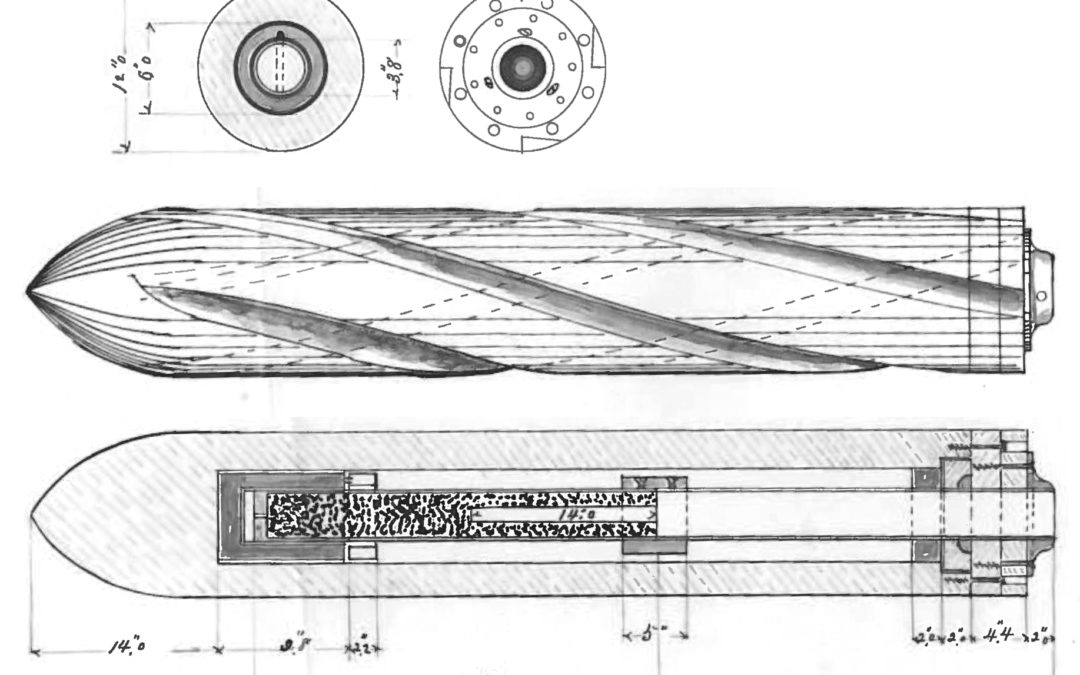

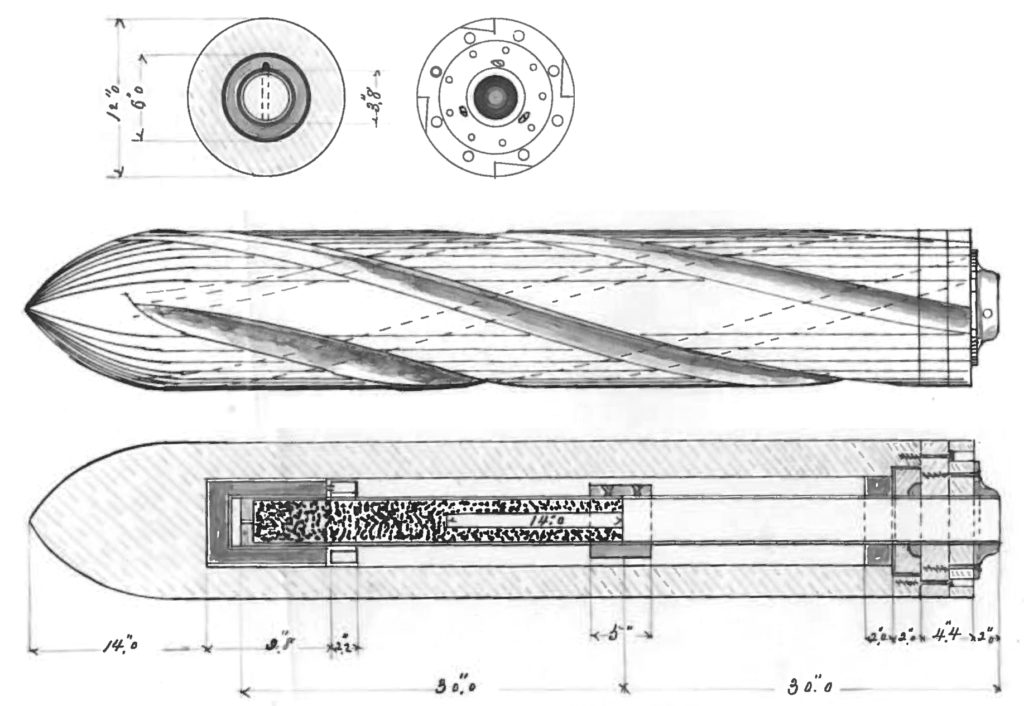
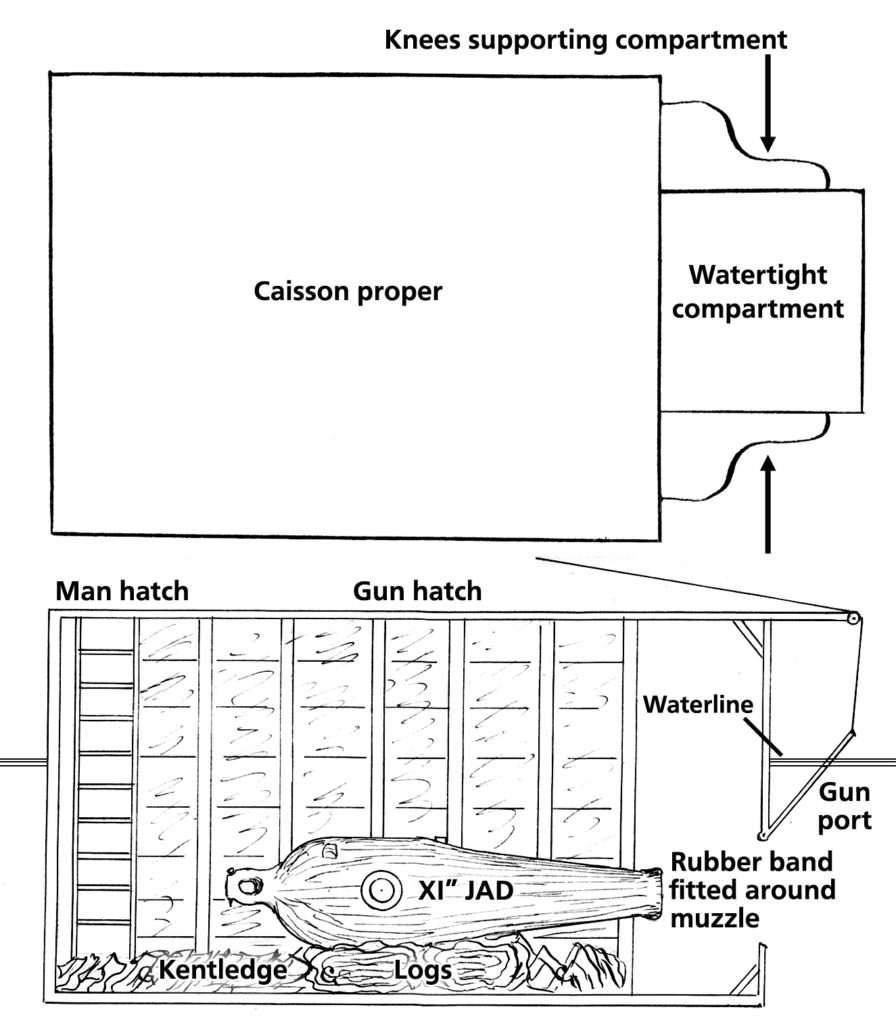
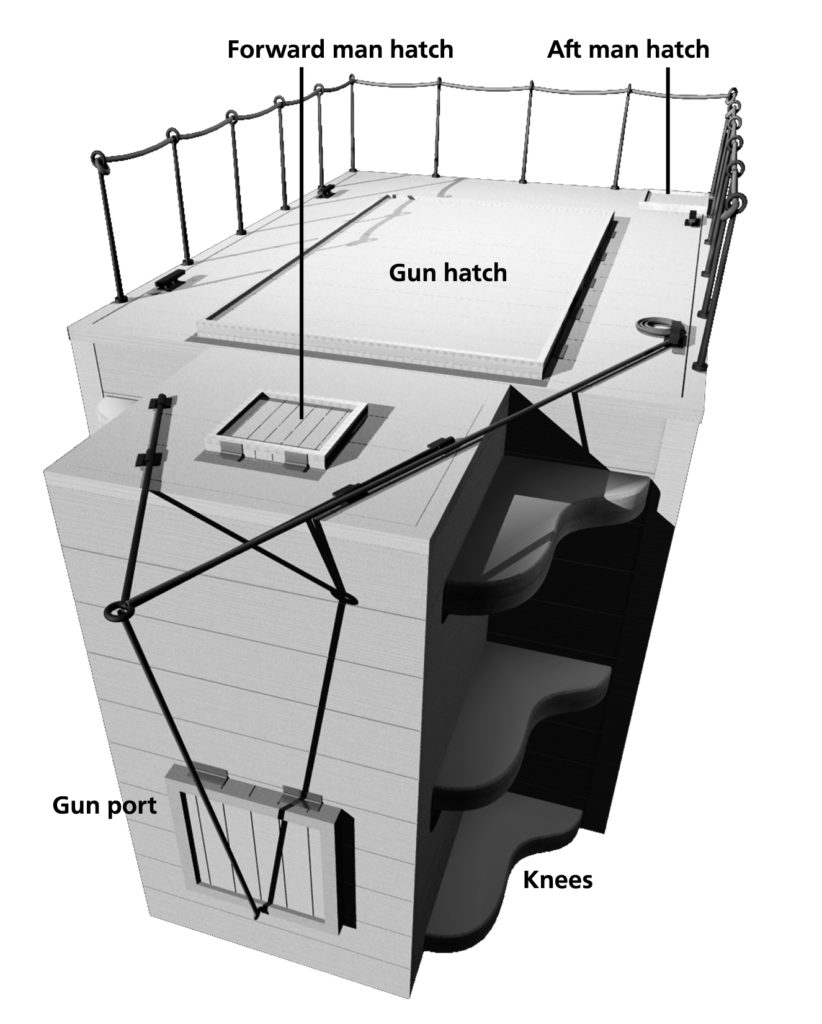
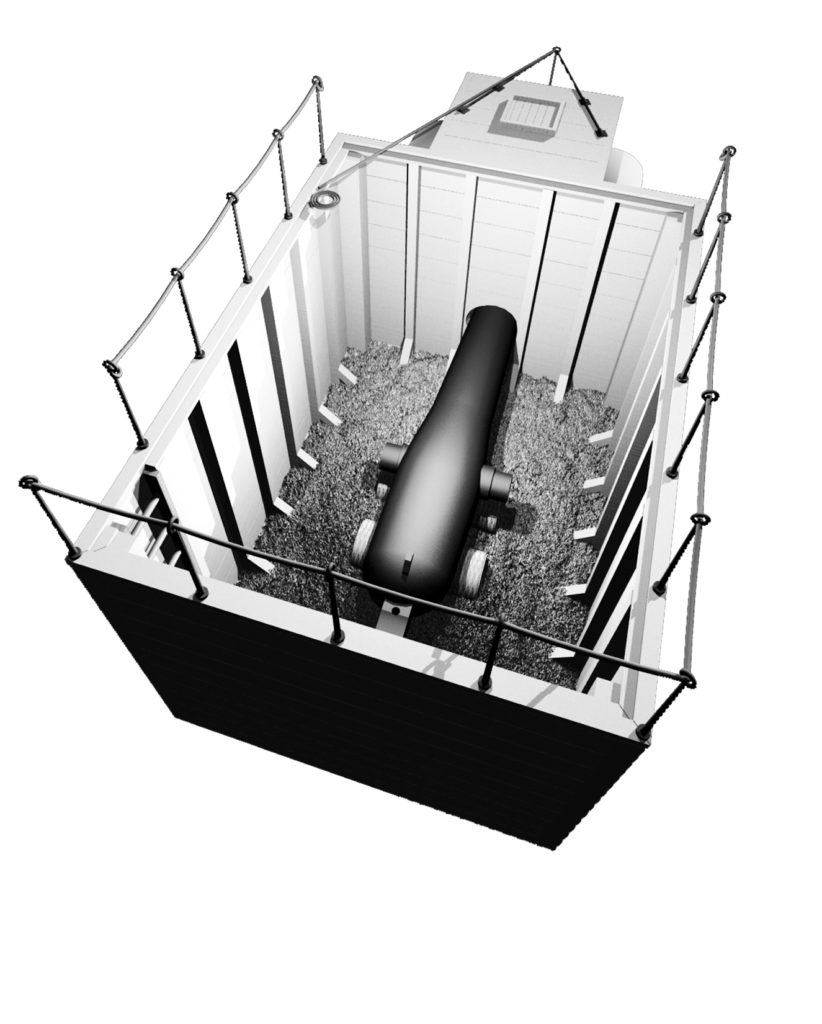
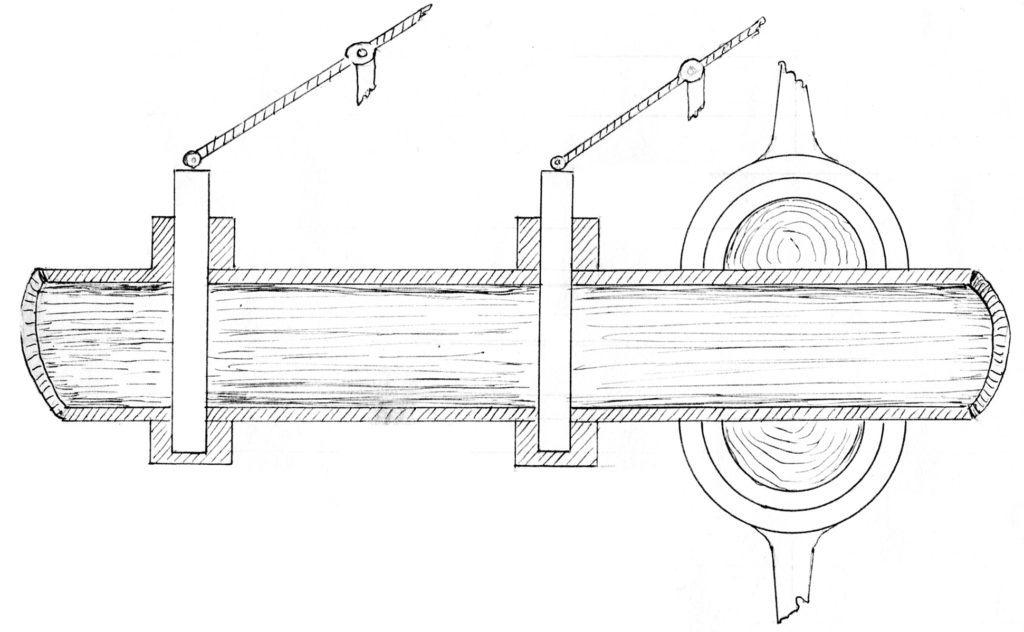
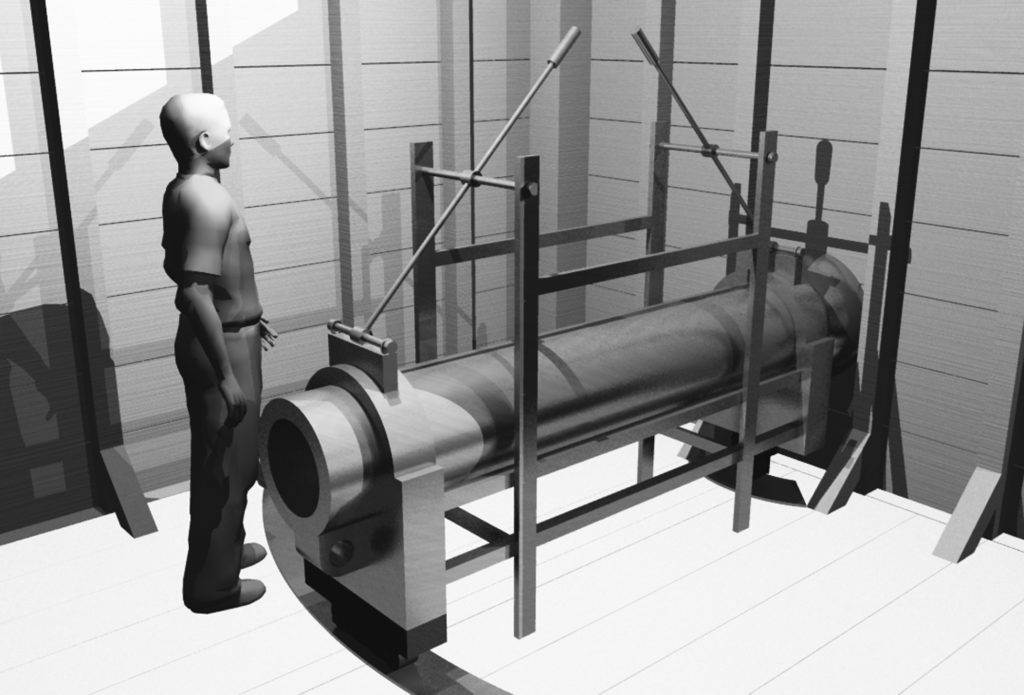
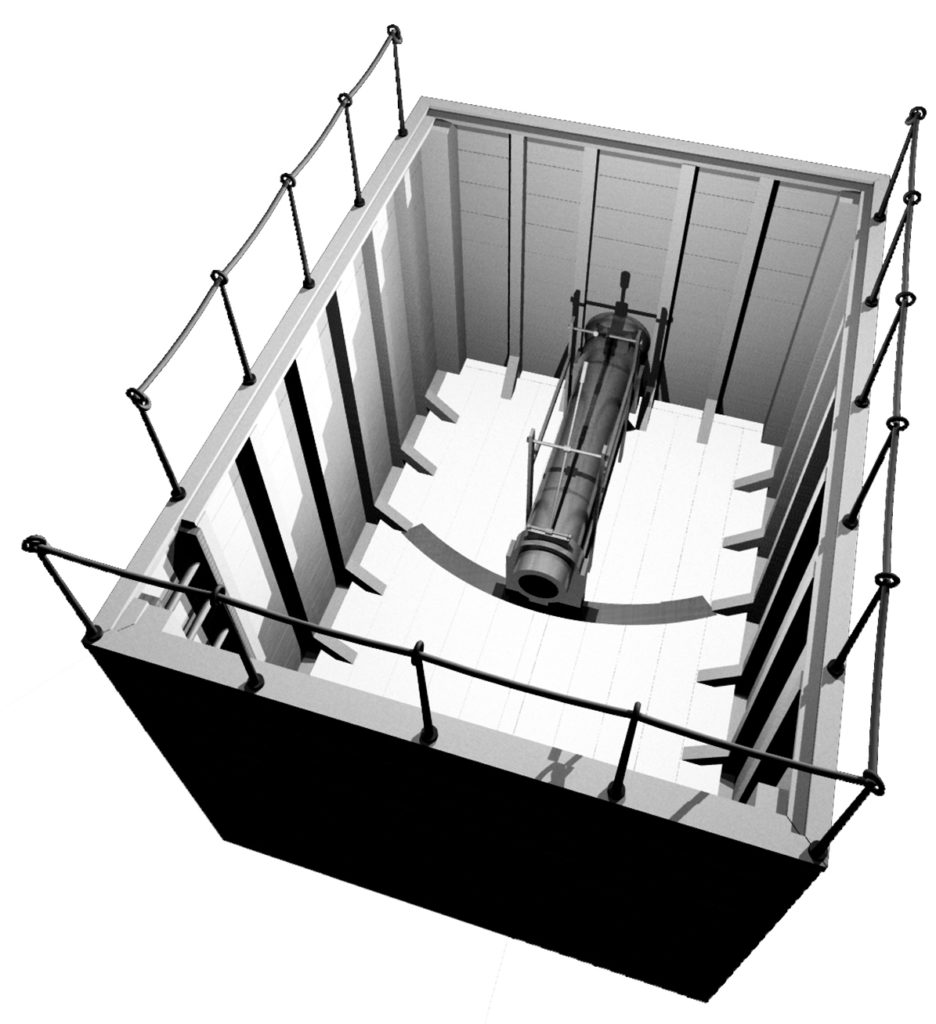
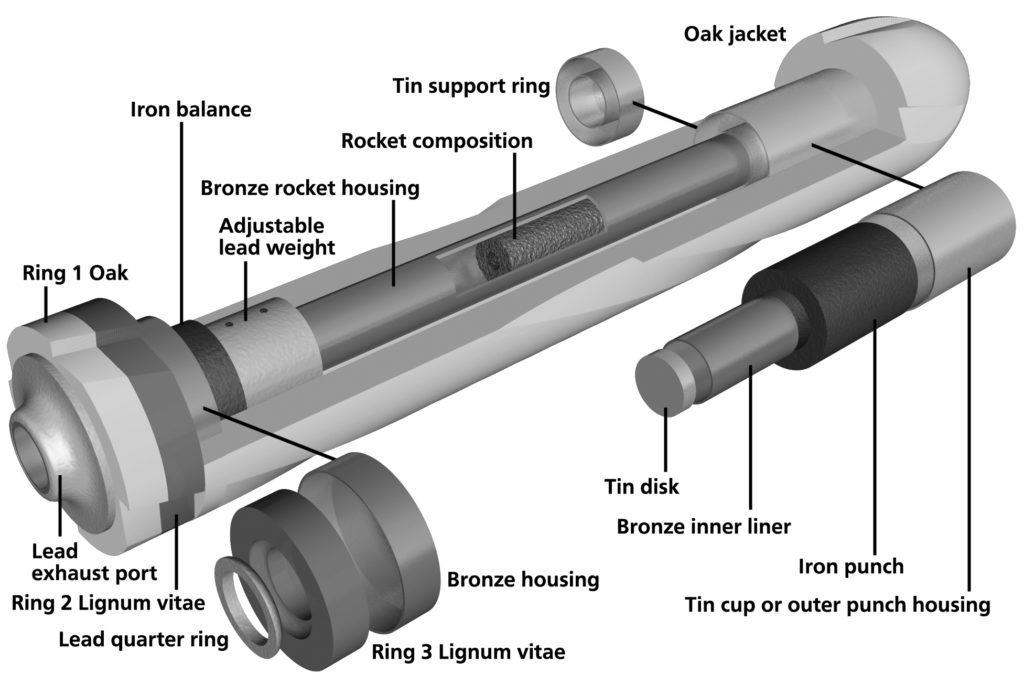

Recent Comments